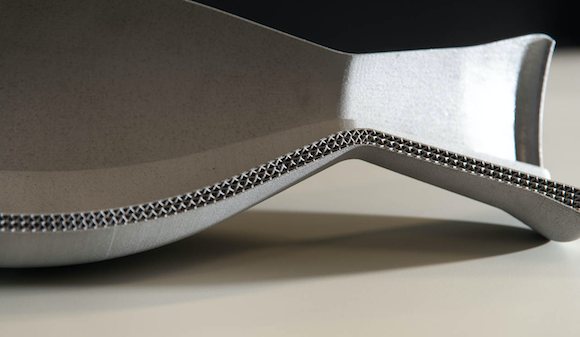Amaero collaborates with Swinburne University on coatings research
June 21, 2021

Additive Manufacturing parts producer and service provider Amaero International Limited, headquartered in Notting Hill, Victoria, Australia, has entered into a research collaboration with Swinburne University of Technology and the Australian National Fabrication Facility Limited on a project to develop coatings for internal turbine engine surfaces and nozzles.
The aim of the project is to advance compliant multilayer environmental barrier coatings (EBCs) that can be applied to rocket engine components; resulting research will have commercial applications in aviation, space, defence and high-temperature processing applications.
Through the research collaboration, Amaero intends to identify additively manufactured designs suitable for the construction of the EBCs, provide technical advice during manufacturing & performance testing, as well as manufacturing and providing full-scale demonstrator parts to meet the EBC requirements. Amaero will also provide funding worth $150,000 funding over a two-year period to support two PhD students and direct cost to work.
“We are very pleased to be collaborating with Swinburne University of Technology on researching and developing specific barriers and coatings,” stated Barrie Finnin, Amaero CEO. “The global space industry represents a significantly large and strategic commercial opportunity for Amaero and this research will enhance the industry leading technology that our company provides. We look forward to working with Swinburne and the ANFF on this research and development project and benefiting from the commercial opportunities arising from the outcomes.”
Swinburne will also contribute to the cost of the project and provide in-kind contributions, focusing on the identification of EBC microstructures, designs, and alternative material systems to meet commercial relevant requirements and develop approaches to fabricate the identified EBCs; responding to industry expert’s feedback concerning optimisation of the microstructure for the EBC application and conducting fabrication trials that meet the commercial relevant EBC requirements.
Professor Alan Duffy, Lead Scientist of the Royal Institution of Australia and Director of Swinburne’s Space Technology and Industry Institute, added: “This is an exciting project that showcases Swinburne’s strength in materials and coatings for space. By bringing together the brightest minds and world class capabilities from Swinburne, ANFF, and local industry excellence in Amaero, we can address the material issues within the extreme environment of a turbine engine. In solving this problem for space, we also benefit through its use back on Earth. Swinburne is delighted that Amaero is partnering with us in this breakthrough space manufacturing technology.”
This collaboration hopes to illustrate the global significance of Australia’s research capability and the growing presence of Australian technology within the aerospace and Additive Manufacturing sectors.
















